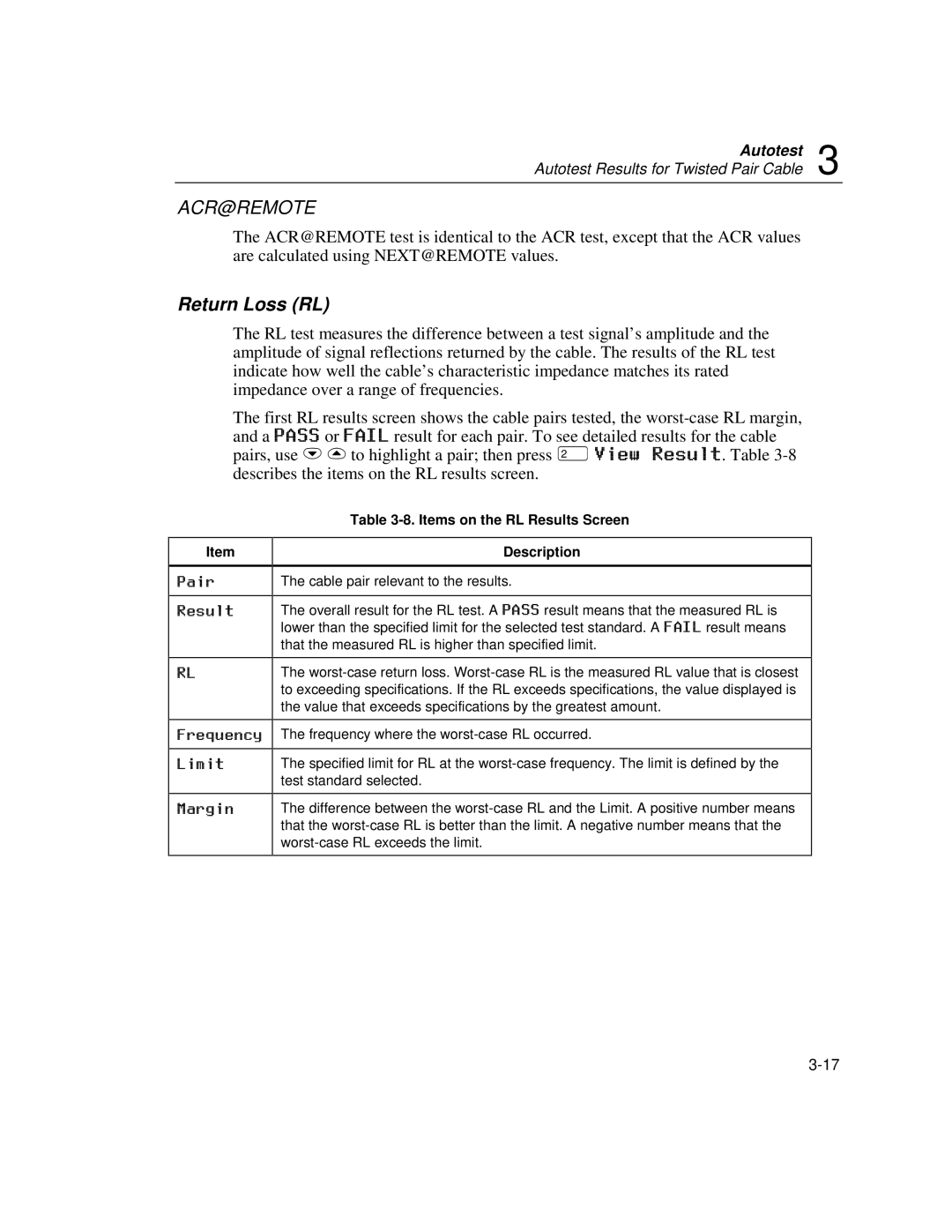
Autotest 3
Autotest Results for Twisted Pair Cable
ACR@REMOTE
The ACR@REMOTE test is identical to the ACR test, except that the ACR values are calculated using NEXT@REMOTE values.
Return Loss (RL)
The RL test measures the difference between a test signal’s amplitude and the amplitude of signal reflections returned by the cable. The results of the RL test indicate how well the cable’s characteristic impedance matches its rated impedance over a range of frequencies.
The first RL results screen shows the cable pairs tested, the
Item
Pair
Result
RL
Frequency
Limit
Margin
Table 3-8. Items on the RL Results Screen
Description
The cable pair relevant to the results.
The overall result for the RL test. A PASS result means that the measured RL is lower than the specified limit for the selected test standard. A FAIL result means that the measured RL is higher than specified limit.
The
The frequency where the
The specified limit for RL at the
The difference between the
